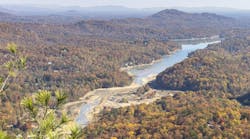As we gather in Portland, OR, for the 13th annual StormCon conference, we have a perfect opportunity to view some of the country’s most successful and well-established examples of green infrastructure. Portland’s Green Streets program, in particular, shows how GI features can help a city manage runoff, meet water-quality requirements, and reduce flooding and erosion. The program has a more-than-10-year track record and about 1,400 GI facilities and counting; the article “Making Rain Gardens Work,” of this issue, provides more detail.
But what about those of us in other parts of the country who have less experience, perhaps, with rain gardens and other green infrastructure elements, but who nevertheless want to incorporate them into a stormwater management strategy? Where do we start? And how do we know we’re doing it right?
The guest editorial, “The Challenges of Keeping the ‘Low’ in LID“, emphasizes some of the things we need to do–and to avoid–to have the best shot at success. The author was prompted to write the piece because of the many examples he’s seen where haphazard planning or misguided cost-saving strategies, such as skimping on the plantings, led to less than optimal results. He plans to follow up with more detailed articles on these topics in upcoming issues.
The article “Test Case for Improving a Highly Urbanized Watershed“ by Jim Nabong shows how one city–San Diego, CA–is incorporating GI elements into its stormwater program and conducting pilot studies to determine effectiveness, ease of maintenance, and public acceptance. The city has been adding GI and other treatment options into existing street rights of way “like tight-fitting puzzle pieces,” piggybacking the work onto other projects where possible to save money and cause the least possible disruption to vehicle and pedestrian traffic. One of the city’s goals is pollutant load reduction to meet TMDL requirements, and the slow-and-steady approach–as he puts it, “a process of exploration, discovery, and program refinement”–is helping ensure that the measures the city ultimately adopts are affordable and will work.
Finally, the article “Green Infrastructure Sizing Criteria Development” by Andy Reese and Joe Parker is the first of two that considers sizing criteria for green infrastructure. Many cities and counties have adopted or are considering requirements to capture onsite either a certain volume or percentage of runoff–the first inch of rainfall or 95% of runoff, for example–by using GI. The article explains, technically but understandably, why this might be more complicated than it first seems, and how an alternative goal–capturing a percentage of average annual rainfall rather than a percentage of the design storm–can be more achievable. It’s essential reading for anyone flirting with green infrastructure (and pretty entertaining, to boot). Look for part 2 of the article in our September issue.
About the Author
Janice Kaspersen
Janice Kaspersen is the former editor of Erosion Control and Stormwater magazines.


